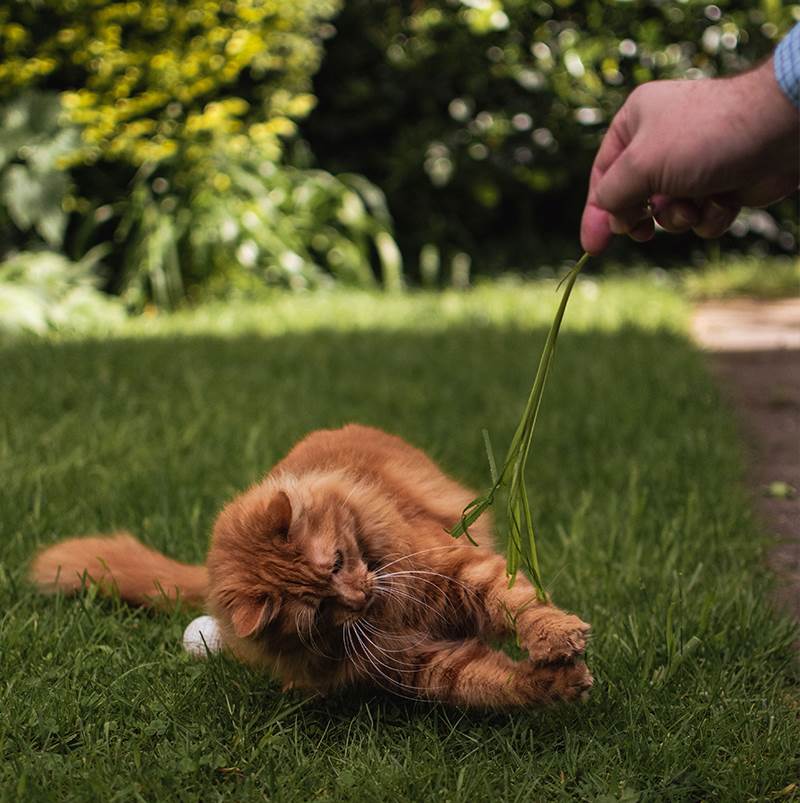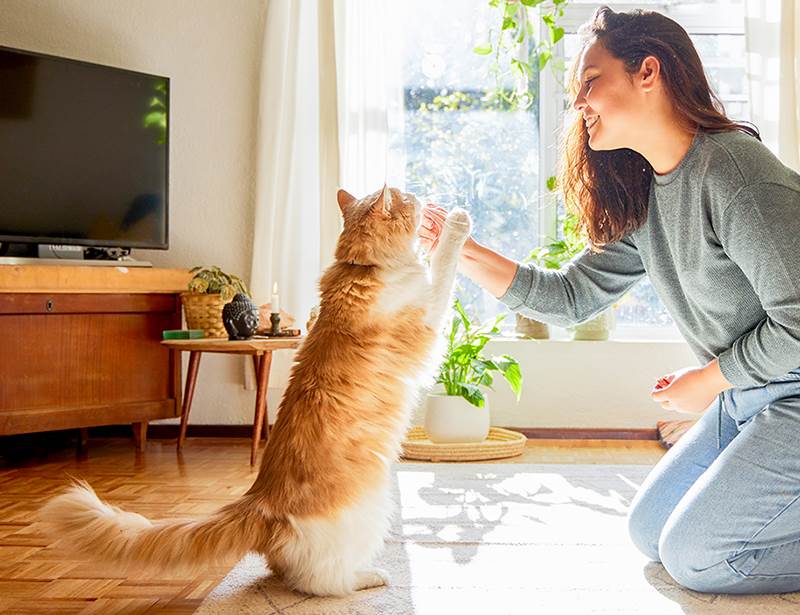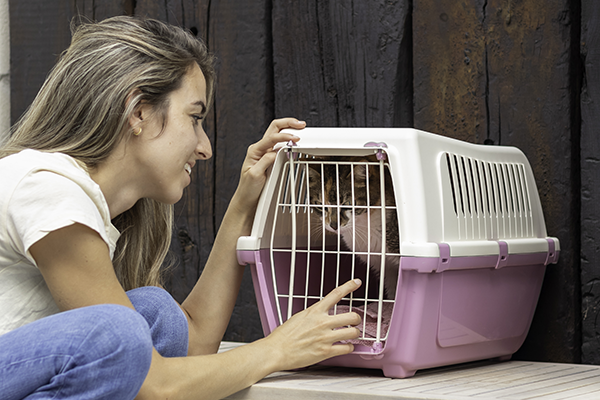Decoding 9 cat behaviour myths
Understanding your cat to keep them happy and healthy
Since ancient Egypt, cats have both captivated our hearts and puzzled us with their mysterious nature. While research has helped us understand cats much better, it’s still not always easy to figure out what they think or how they feel. There are still some persistent myths about cats that we now want to shed light on. By realising the true meanings behind your cat’s actions, you can build a stronger bond with your cat and help them live a happy and healthy life.
Myth 1: Cats purr when they are happy
A purring cat does not necessarily mean pure bliss. While cats often purr when they are content and relaxed, purring can sometimes serve as a means of self-soothing when they are anxious or in pain. Additionally, a cat may also purr to communicate with other cats or their owner. Pay attention to your cat’s body language and the context when they’re purring to interpret their message accurately.

Myth 2: Cats show their belly when they want it to be rubbed
Although a cat exposing its belly may seem like an invitation for a tummy rub, it’s not always the case. A vulnerable belly is a sensitive area that cats instinctively protect. When a cat rolls onto its back and exposes its belly, it’s saying, “I trust you” and expressing comfort in your presence. However, if you try to take them up on their ‘offer’ and give them a pat, a cat may react with a light bite or a scratch, as they were not expecting a physical response from you. Proceed with caution and see your cat’s body language to avoid misinterpreting their signals.
Myth 3: Cats meow just for fun
Cats are highly skilled communicators, and their meows are an integral part of their language. Interestingly, it’s kittens that use meows to communicate with their moms, while grown cats use them exclusively to communicate with us humans. Each meow carries a distinct meaning, whether it’s a request for food, attention, or expressing discomfort. Some cats are more talkative than others, but if your cat’s meowing starts to suddenly increase, it could be a sign that something’s off and should be investigated further. By paying attention to the context, pitch, and intensity of the meows, you can better understand what your cat is trying to tell you and respond accordingly.

Myth 4: Cats scratch things to protest
Cats don’t scratch furniture or other objects out of spite or as a form of protest. Scratching is a natural behaviour that serves various purposes for cats including stretching their muscles, maintaining their claws, and marking their territory. Cats have scent glands on their paws, and releasing the odour allows them to ‘mark’ objects as their own. They may also scratch to release energy or excitement, or simply because scratching is fun and feels good to them. If you want to protect your furniture, trim your cat’s nails regularly and give them something more attractive to scratch on like a scratching pad or a cat tree/tower. Whenever they use it, use positive reinforcement (like giving a small treat) to encourage this behaviour further.
Myth 5: Cats knock things over out of spite
When your cat sends your favourite mug or phone crashing to the floor, it’s easy to assume malicious intent. However, knocking things over is often a result of curiosity, playfulness, or an attempt to get your attention. Cats are curious creatures who enjoy exploring their environment and often do so by touching and pushing things with their paws, and objects that are within reach may inadvertently become victims of their inquisitive nature. Ensuring a cat-friendly environment with sturdy and secure items can help minimise accidents.
Myth 6: Some cats just choose to go outside the litter box
Inappropriate elimination outside the litter box is a common concern among cat owners, but it’s important to understand that it’s not simply ‘bad behaviour’. Cats are tidy animals who want to cover their pee and poop, so if your cat starts to avoid the litter box, there’s something going on. There can be medical issues, stress, or a dislike of the litter box’s location, type of litter or cleanliness. Finding the underlying cause, consulting with a veterinarian, and implementing proper retraining and litter box management techniques can help resolve this issue and restore harmony in your home.
Myth 7: Cats can’t be trained
While it’s true that cats have an independent streak, they are capable of learning and being trained. Using positive reinforcement techniques, such as treats and praise, you can teach your cat a variety of commands and behaviours. Training not only stimulates your cat mentally but also strengthens your bond and enhances their overall well-being. Cats feel safe when things are familiar and predictable, so any new thing should be introduced gradually. Another key to successful training is patience, as a lot of repetition is needed for you to teach your cat a new routine. The good news is, once learning it your cat is likely to stick with it furever.

Myth 8: Cats are healthier than dogs (or humans)
One prevailing myth surrounding cats is the belief that they have nine lives, which often leads to the misconception that they are inherently healthier and less in need of regular health check-ups. However, this couldn’t be further from the truth. Cats, like dogs and humans, require consistent medical care to ensure their well-being. Moreover, because cats are masters at hiding any signs of illness and injury, your cat could develop an advanced health condition before you notice anything is wrong. During annual check-ups, your vet can detect conditions or diseases before they become severe, painful, or more costly to treat.
Myth 9: Cats tend to freak out during vet visits and it can’t be helped
Many cats indeed experience anxiety and stress when visiting the vet, but there are steps you can take to make the experience more comfortable for them (and for you). Familiarising your cat with their carrier and gradually acclimating them to the vet clinic can significantly reduce their fear and anxiety. If your cat is too anxious to travel or to visit the clinic, consult your vet for tips on how you can help make the experience less stressful.
Understanding your cat’s behaviour is an ongoing journey that requires dispelling the myths that surround their actions. By unravelling the truth behind these common misconceptions, we can cultivate a deeper appreciation for the complex and fascinating nature of our feline companions. Armed with this knowledge, we can build stronger connections, provide better care, and forge lifelong bonds with our enigmatic and lovable feline friends.
We wish you & your cat a purrfect International Cat Day together!




